Fast Scooters, CORCS Racing
What does it take to build a fast scooter? How much money? What kind of time? Why would a person even want to build a fast scooter? Why not just buy a scooter that was designed from the get go to go fast?
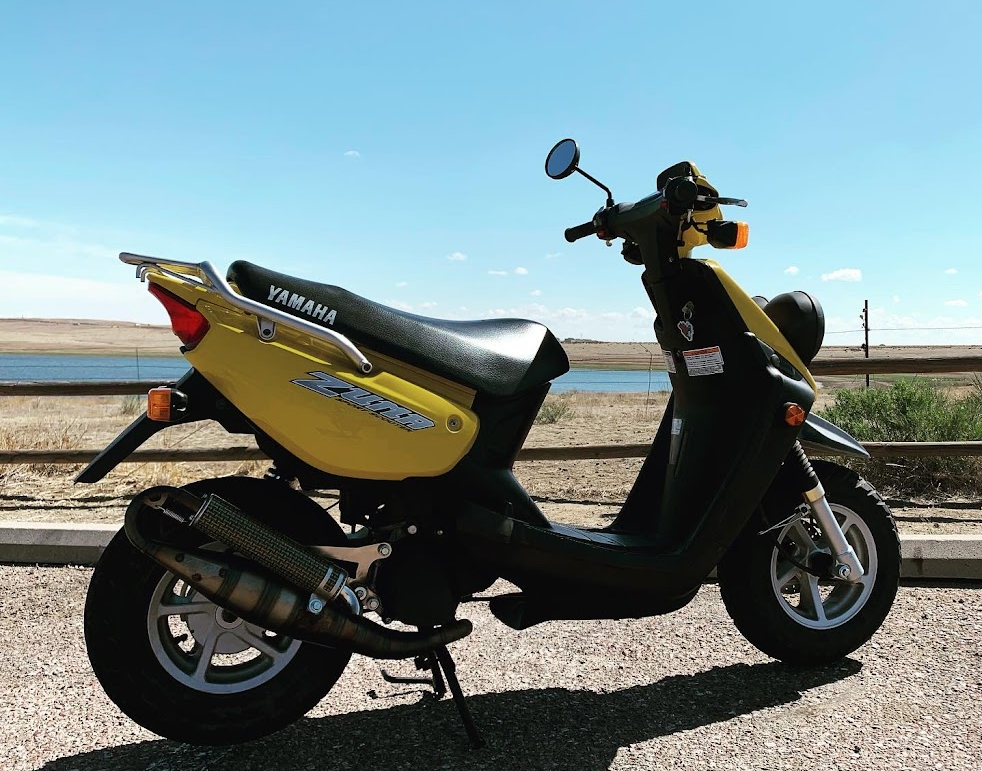
I built a Yamaha Zuma that goes from 0-55mph about as fast as many small cars. It revs to 12,000rpm. It does wheelies. It has a cool pipe, and it makes cool noises. It looks stock other than the pipe and retains the factory electric start, autolube pump, center stand, and lights. I wanted to build a wicked fast street scooter without compromising the things that make it a street scooter. It has a single ring piston that needs to be inspected and re-ringed every so often. I had to completely disassemble the engine to install a stronger crankshaft. The transmission had to be modified and tuned to use all of the power I added to it. I can’t speak to its reliability because I haven’t put many miles on it, only time will tell. I could have spent the same money on a PCX150 or another scooter with a large 4-stroke engine and had a much more reliable scooter with way fewer headaches. This scooter is “fully built” with less than 1000 miles on the clock. The entire process took me about 2 years worth of weekends. I bought the scooter in May of 2020. I consider it “done” now, and it’s May 2022.
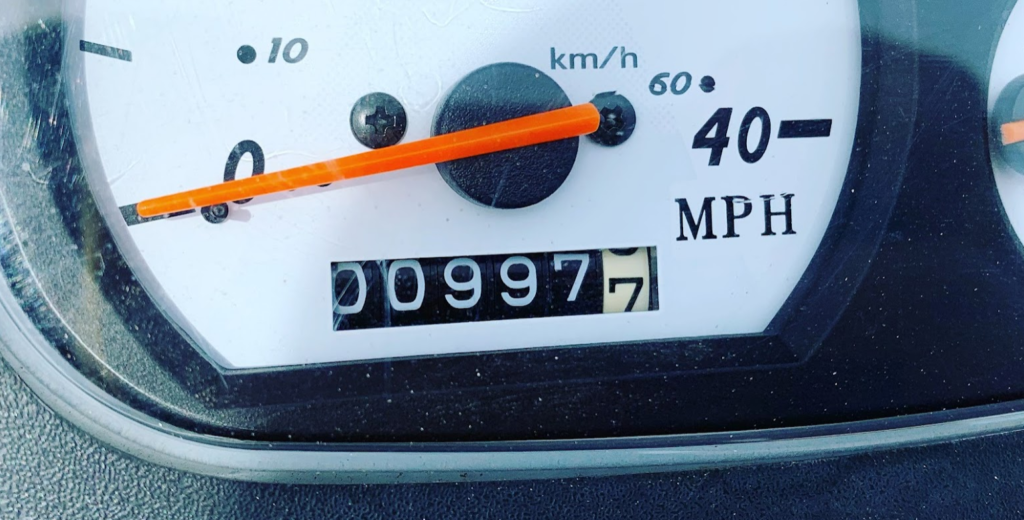
So why bother turning a 49cc scoot into a 70cc scoot that took a lot of work to put together, that shrieks like a banshee, and is apt to break? The answer to this question is because I can. Because I enjoy modifying engines. I enjoy building hot rods. I enjoy the work. I like buying parts. I like inspecting aftermarket parts. I like seeing how they work. I like tiny things that punch above their weight class. I like the underdog. I like to experiment. I like to test things. I like to push things until they break just to see how far they’ll go. I like to inspect the carnage after I break them. It started life as a 49cc, so it can be registered as a low power scooter and ridden by anyone with a driver’s license. Did I mention it makes cool noises, sounds like a KX65 motocross bike? And would probably outrun a 65cc MX bike to boot? Well it does all of that too.
Inspecting the Carnage
I originally assembled this with the engine in and used the stock crank. The stock crank lasted all of 200 miles. Power and revs and heat caused the big end of the crank to melt and seize.
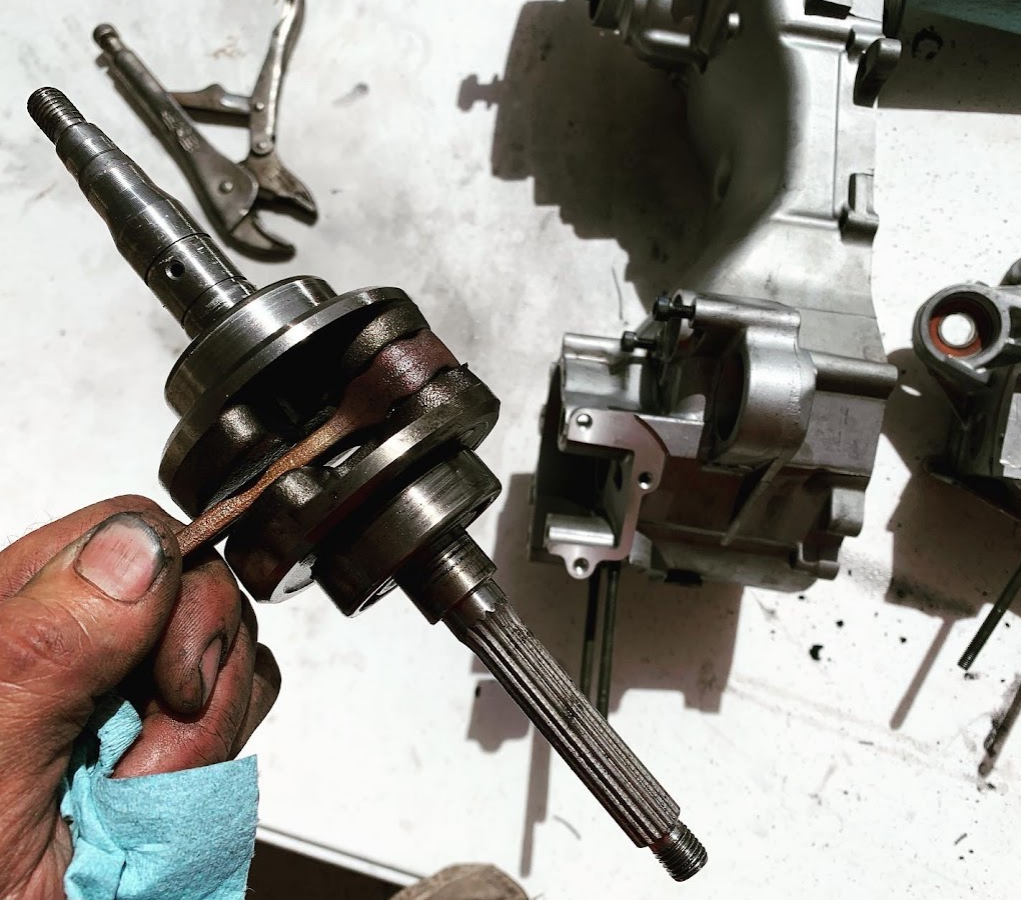
A crank shaft should move freely. You shouldn’t be able to pick it up by the connecting rod like this and have the crank webbing just hang in the air. Let’s look closer at it and see what happened.
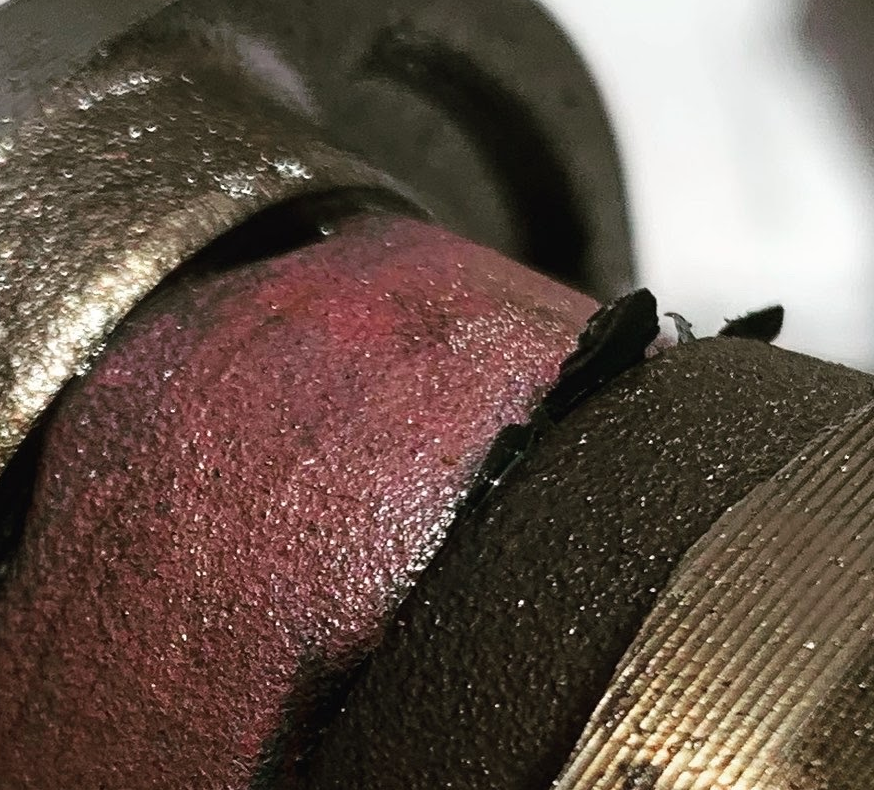
Long story short, this crank was designed to rev to 7-8000rpm with about 4hp behind it. I forced it to deal with 12,000rpm and 12-15hp. It got hot, melted, and spit some metal out of the big end of the connecting rod bearing. It seized while I was going about 50mph down a 45mph 2-lane country road, and I had to wait 2 hours for someone to get my van and pick me up. All part of the adventure.
New Crank and Parts List
A new crank was ordered and installed. I went with the Stage6 HPC crank, which is a rebranded Athena HPC crank. I used a Tusk crankshaft install tool to install the crank in both case halves.
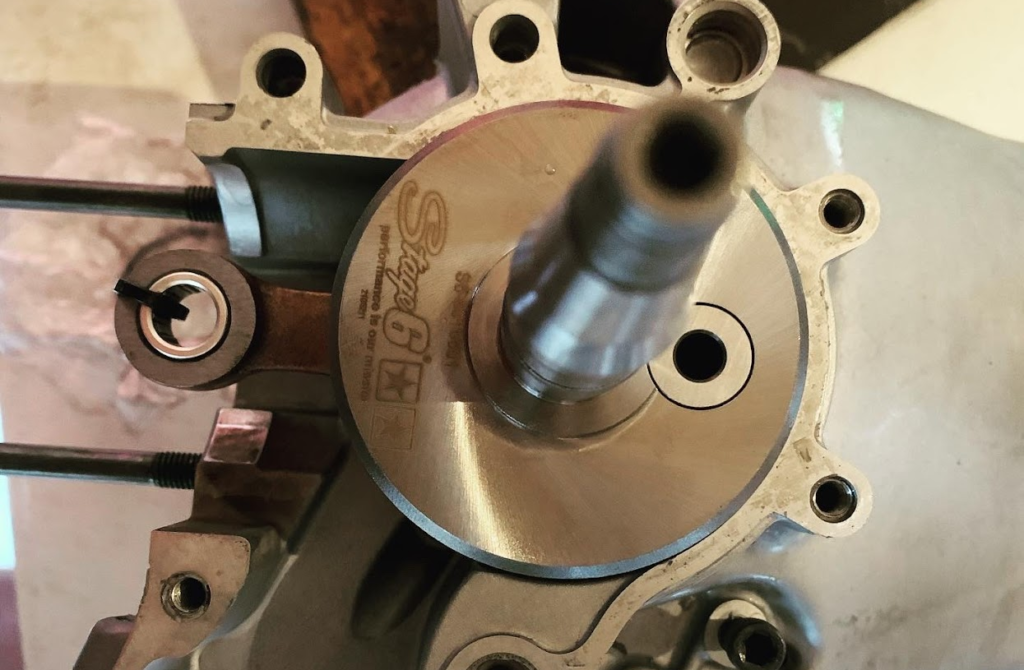
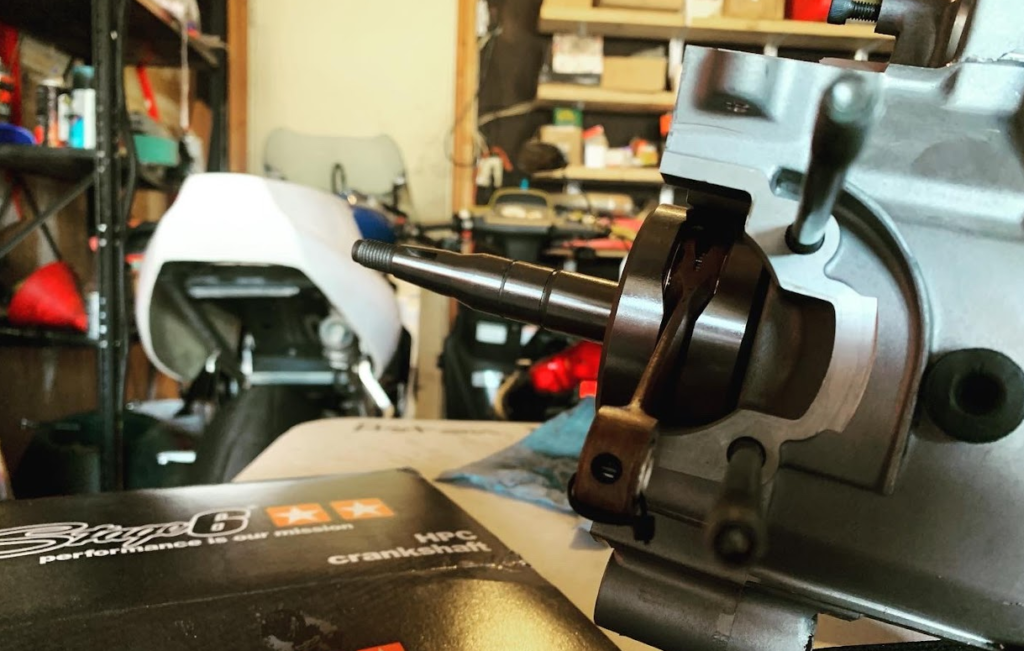
I used polymer cage bearings (cages must face the crank webbing), new Athena crank seals, and Hondabond to seal the cases. There is no additional gasket required to seal the cases.
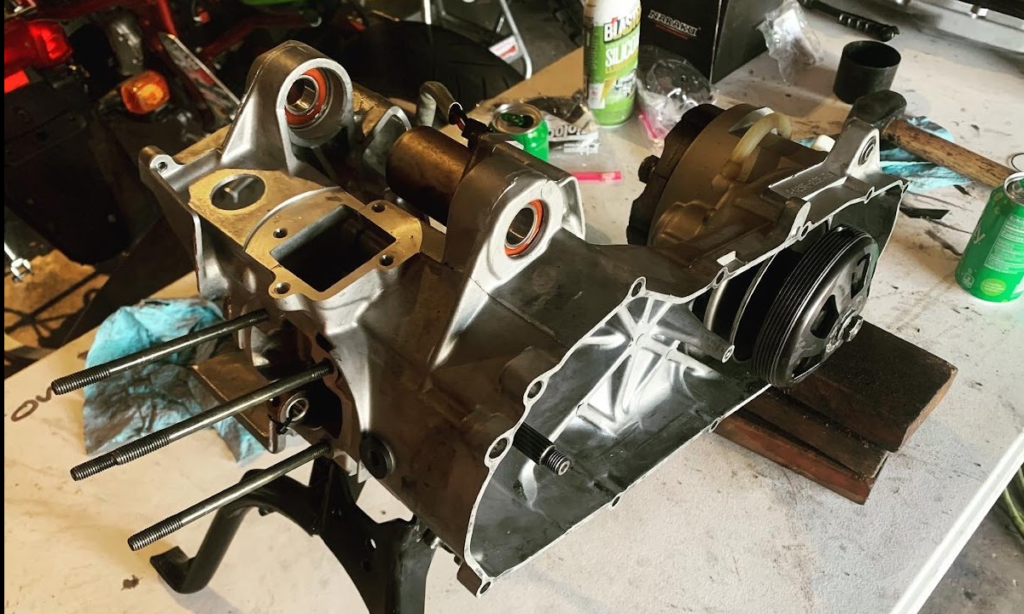
Once the crank was installed, I reassembled the rest of the engine after honing the cylinder and installing a new ring on the piston. I had to go from a 102 main jet to a 106 main jet on account of the higher primary compression of the Stage6 crank shaft.

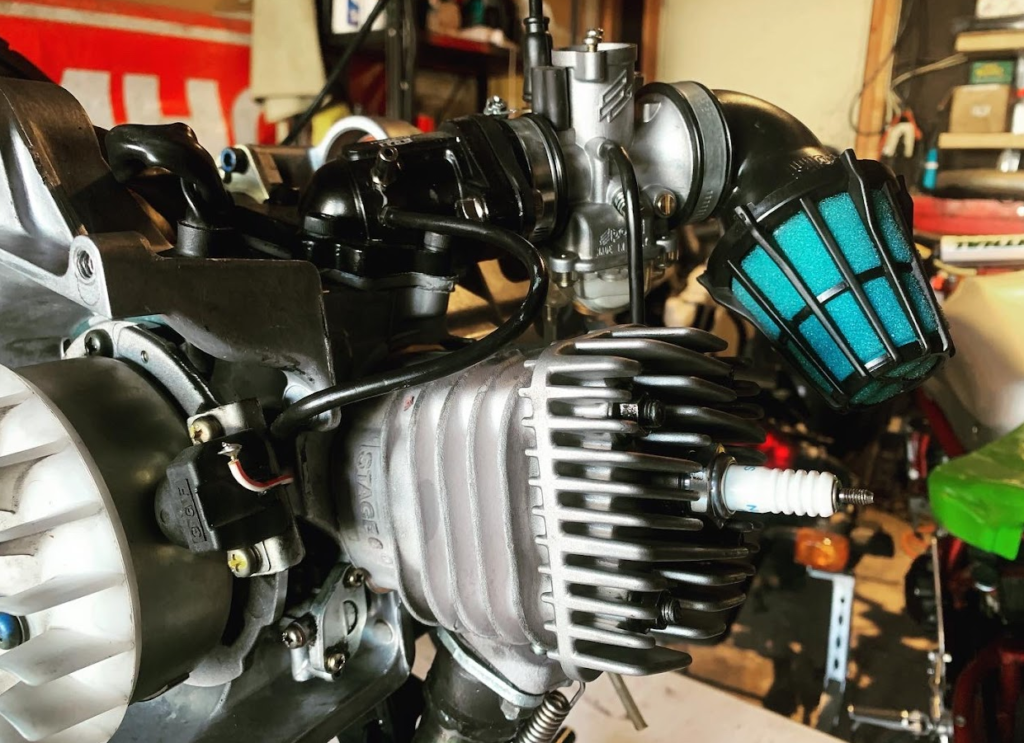
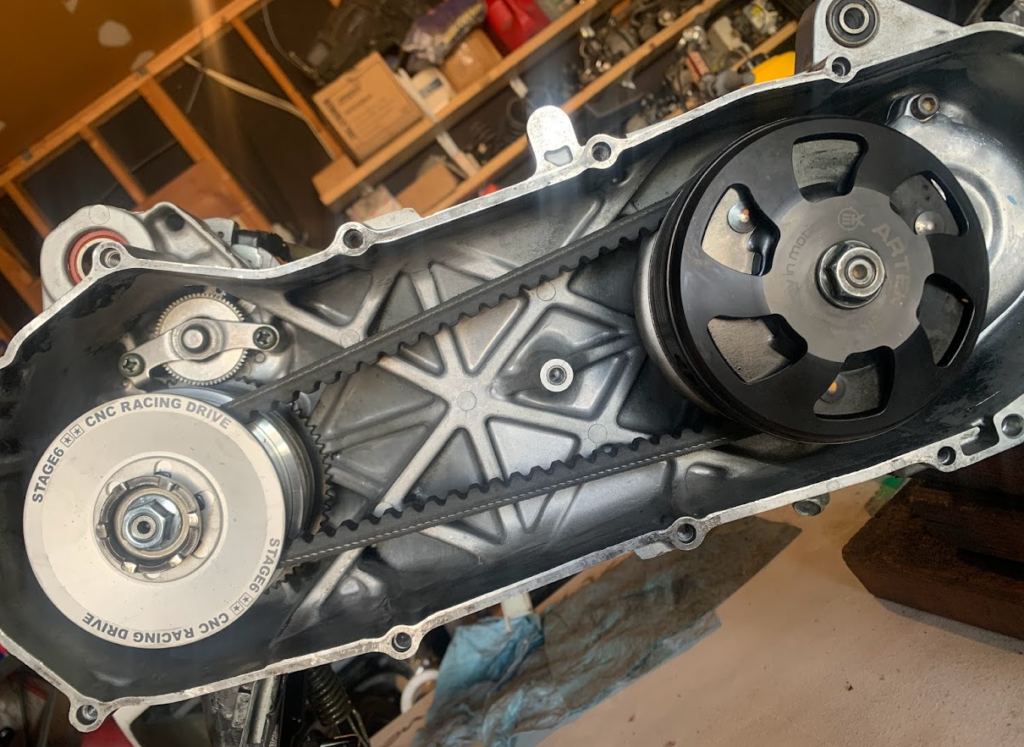
Let’s talk about all of the parts that went into building this engine. All prices are approximate.
Intake/Rotating Assembly/Exhaust Parts
Naraku intake + reed cage ($100)
Polini 21mm CP carburetor ($150)
Polini angled air filter for CP carb ($35)
Jets Jets Jets for CP carb ($25)
Throttle cable for CP carb ($25)
Stage6 manual, lever actuated choke ($30)
Stage6 Sport Pro MK2 cylinder ($190)
4x BR9HS spark plugs ($16)
Stage6 HPC crank shaft ($190)
SKF polymer cage bearings ($30)
Athena crank seals ($25)
Yasuni City16 pipe ($300)
Transmission Parts
Polini Hi-speed Variator ($80)
Roller weights for variator ($30)
+15mm Artek belt ($35)
Stage6 drive face ($30)
Variator shims ($10)
Metrakit 107mm racing clutch ($80)
Artek 107mm clutch bell ($90)
NCY straight cut torque driver ($55)
Torque springs ($35)
Clutch springs ($15)
Athena +33% gears, awaiting installation as of writing this, should result in top speeds of ~70mph, the “finishing touch” if you will ($90)
Add all of that up and you should get ~$1700. That does NOT include the $100 silencer that fell off on one of the first test runs, nor does it include any of the maintenance I did to the stock scooter to return it to running condition before I built it. It doesn’t include fuel line. It doesn’t include the $60 hone I used on the cylinder or the $20 top end gasket kit or the $20 piston ring I installed when I built the engine. It doesn’t include the new front fender I installed on the scooter. I paid $600 for the scooter itself in non-running but excellent physical condition. Nor does it include any of the time I spent building and testing it. I got a decent deal on the scooter. So call it $2300 all in to build a scooter that does wheelies and will go 65-70mph after I install the +33% rear gears. That’s actually pretty reasonable for a “fully built” anything, it would cost a lot more to run the same algo on a motorcycle or a car (heaven forbid – car stuff is eye-wateringly expensive!).
Was it worth it? To me it was! But unless you like building hot rods and the sound of shrieking 2-stroke engines, you’re probably better off buying and riding a 125-150cc 4-stroke scooter with fuel injection. I wouldn’t recommend commuting on a scooter like this. It is not designed or built to solve a poor person’s transportation problems. It’s a weekend toy for someone who can afford toys! This scooter would be hard to find for $2300 built like this. If I ever sell it, I will likely ask $2500-$3000 for it, but it’s not going up for sale any time soon if I can help it! It’s going to be the fastest and coolest pit bike at the races in 2022 and will be a lot of fun to ride around town! Maybe I’ll ride it to some local car meets.
And the color matches my off road race bikes! So there!
CORCS Round #3 Rimrock Sprint Enduro
In a word, brutal. It was like the organizers were trying to punish anyone who doesn’t ride every other day, who isn’t carved out of wood like a Roman gladiator. I got my ass completely kicked not just by my fellow racers but by the course itself. I had never ridden with my newly installed (2 years ago, fuck COVID and fuck alcoholism) Renthal desert bend bars. Also had just installed a new 3ga Clarke fuel tank about a week before the event.
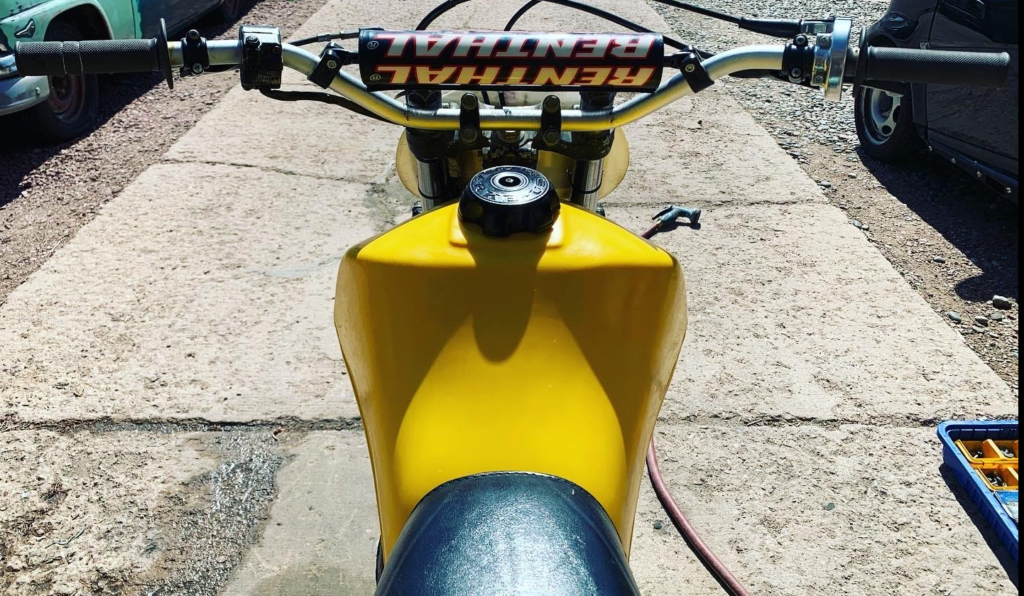
That’s a nice cockpit for the ancient dirt bike, yeah? Yeah buddy. Now for a pic from just before the race started.
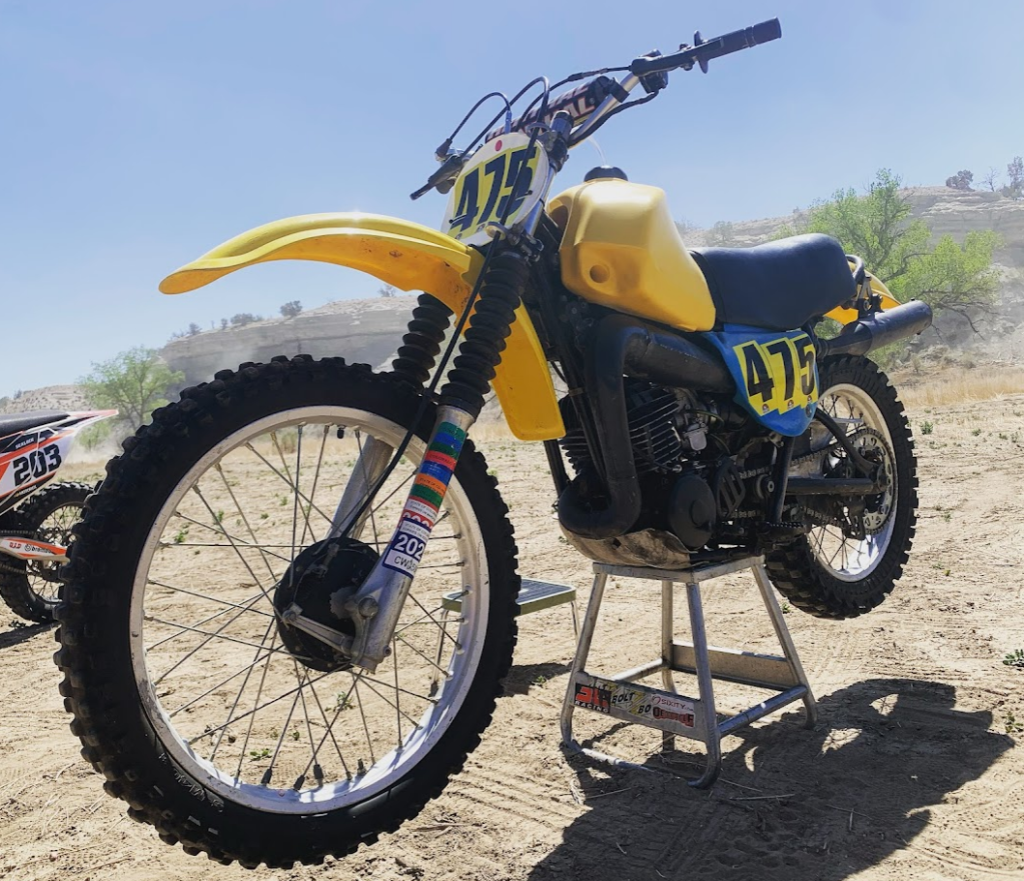
You can go and Google what a 1978 Yamaha IT250E looks like, but they don’t look anything like this stock. They have all blue plastic that’s kind of weird, gauges, lights, and a completely different tank. This one has been modified for off road racing. Though I have a title for it and *may* put in on the street, the license plate will be more for going trail to trail in an enduro type situation than to do anything stupid like commute with or get groceries, which this bike would be terrible for.
Now let’s see it after the race.
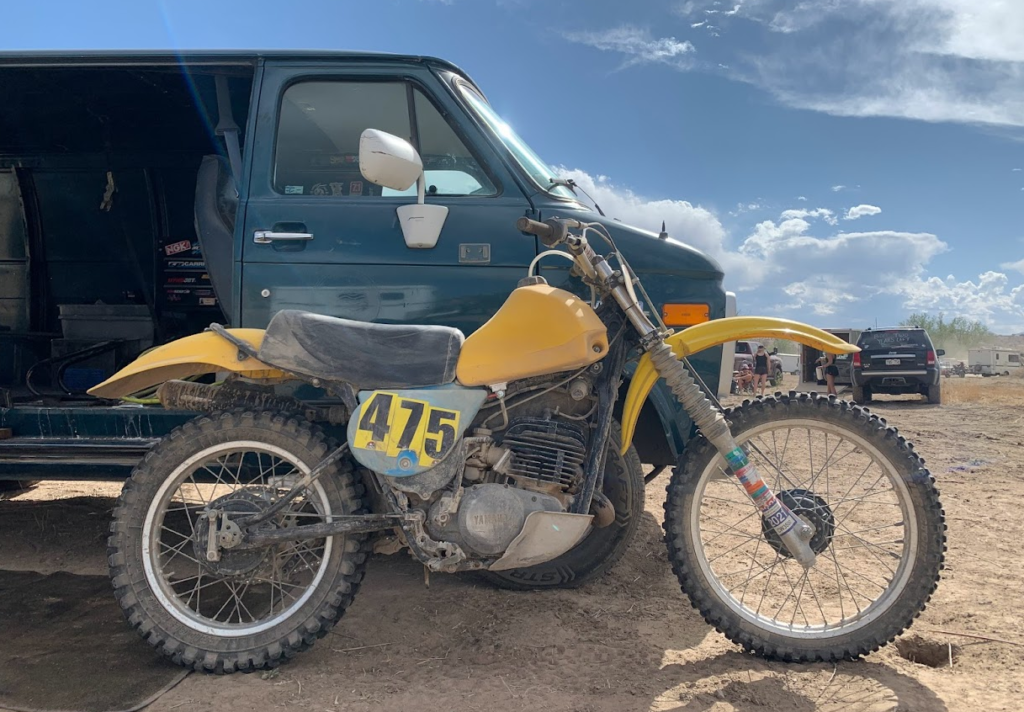
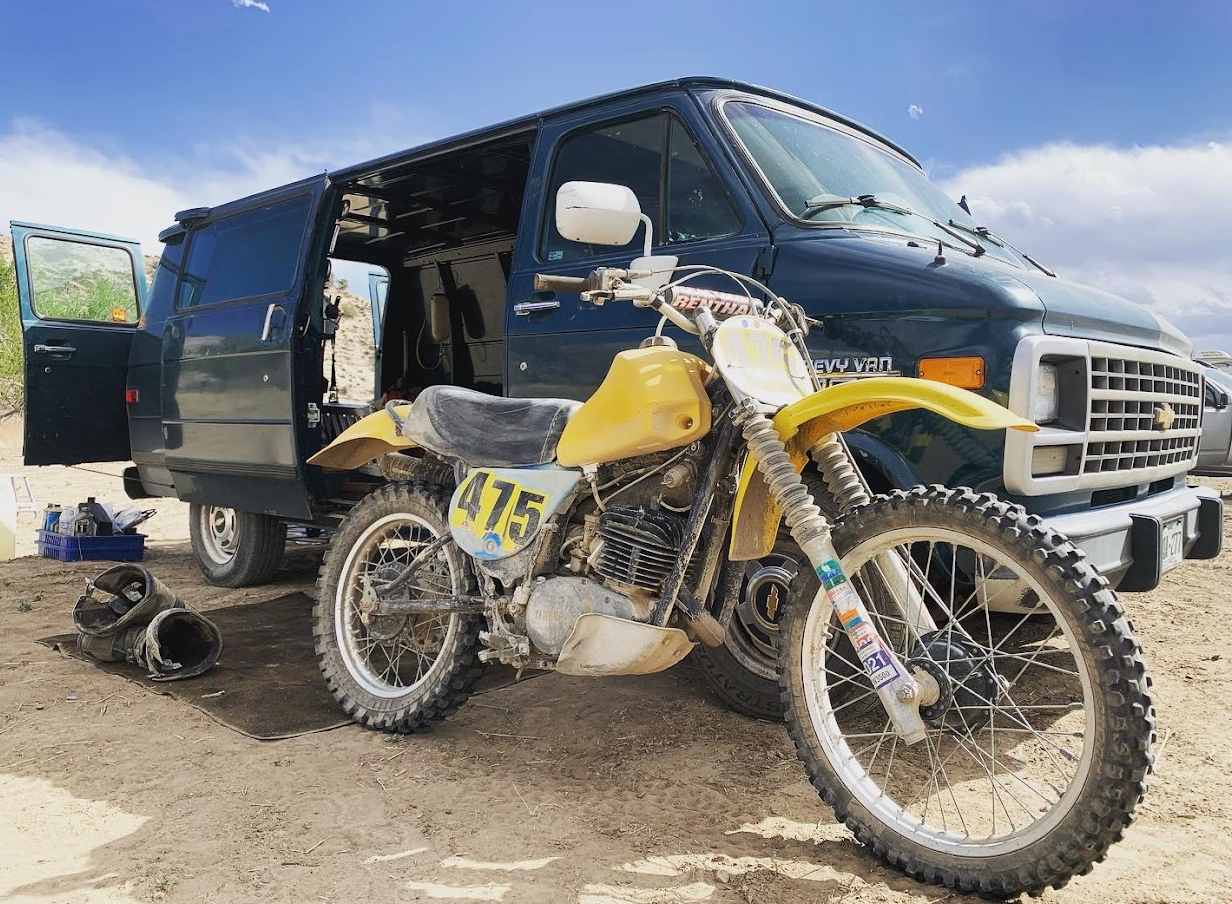
The course was extremely dusty, not sandy – dusty, on account of a good portion of it running on a dry riverbed full of silt. Not sand, silt. Silt has a consistency more like talcum powder, and it’s extremely slippery. It’s extremely difficult to ride in loose silt, and I didn’t really figure out how to do it well. It was taxing on my apparent lack of physical fitness. I’m 6′ tall, 175lbs, have no issues putting my palms on the ground, can run 2-3 miles without dying, and can do 30+ push ups in a minute. I’m in reasonably OK shape for an average person. I hadn’t ridden a dirt bike in about 2 years.
I spent the first lap figuring out how to ride a dirt bike again, which was difficult because I had never ridden in calf deep silt before. I spent the remaining 5 laps in “survival mode” with only one goal in mind: to finish the race in one piece. I wanted to quit halfway into the first lap because the course was not fun at all, and I was having trouble figuring out how to ride in the silt, and my body was screaming. One of the organizers called it a “character builder” during the rider’s meeting. He couldn’t have been more right.
Well I finished. The results for my class came in, and I finished in 4th place out of 7 entries. 5-7th place did not finish the race. Out of the finishers, I came in dead last. But I finished the race, and I think there’s something to that. I persevered despite not having fun and wanting to quit. A lot of things are like that. Was it worth it? The satisfaction of finishing a difficult race made it worth it. People don’t race dirt bikes because it’s fun and easy and comfortable and 100% pleasure. We do it to push ourselves, to see what we’re made of. If that means pain, bring the pain.
Fun story: I walked up to a couple in their 50s after the race because they too ran the post vintage class on old bikes, and I wanted to know how they did and what they thought of the course. I get to checking the results after the race, and the guy with the best overall time in the C-classes was on a post vintage bike. How in the hell? Not only that, he posted a time in Test A that was 5 seconds faster than any of the pro and A class riders in the A-classes. He rode a mid-80s Husqvarna. The pro and A class riders are all on shit hot new bikes with tuned suspensions etc etc. Who the hell is this guy? I google his name, Fred Hoess. Same guy I talked to after the race, holy smokes. 15-time International Six Days Enduro gold medalist, ex-factory Husqvarna racer, racing for the past 40 years, a legend in off road racing still absolutely ripping in his 50s, riding on a totally different level from the local racers. There’s fast and there’s f*cking fast, and that’s f*cking fast. It’s an honor to get to share terra firma with someone like that. Blew my mind!
That’s all for now! The track event at PPIR for today was cancelled, which is how I found time to write this post, so I scheduled the day at HPR for May 30th. Then I’m roadracing at PPIR on June 4th and doing another CORCS race on June 5th, which should make for an interesting weekend. Until next time!